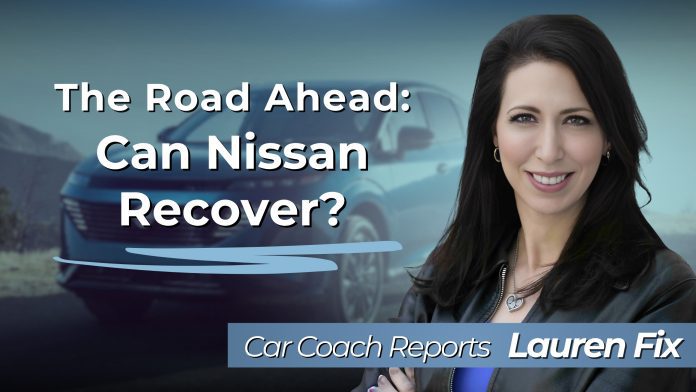The future of Nissan is still in question; buyers, owners, and dealers are very concerned about the future of the brand. It doesn’t look too good for Nissan. Honda can’t work with them, Honda wants to absorb them, Nissan says no. Toyota is working with Subaru and Mazda and passed on the deal. There are some investors interested. Sadly, their public feud with Carlos Ghosn, their past president, was the beginning of a downturn, and the product has not been great since. Dealers are furious, and Infiniti, the luxury brand, is barely alive. So far, it looks bleak. Can the Big Beautiful Bill save Nissan, or is there no hope?
A tale of two automakers
Two automotive giants, Honda and Nissan, are standing at a crossroads. One is thriving, the other is fighting for survival. In December 2024, they flirted with a merger that could have reshaped the industry, only for it to collapse by February 2025. Now, with whispers of a “Big Beautiful Bill” potentially easing U.S. electric vehicle (EV) mandates, could this policy shift reignite talks and save Nissan from its downward spiral? Nissan’s challenges have been looming, the failed merger, and what the future holds for this struggling automaker and its luxury brand, Infiniti.
The Honda-Nissan merger was a missed opportunity. Last year, Honda and Nissan announced plans to explore a $60 billion merger, aiming to create the world’s fourth-largest automaker by vehicle sales, trailing only Toyota, Volkswagen, and Hyundai. The goal was clear: combine forces to tackle the EV revolution, develop cutting-edge software, and compete with Tesla and Chinese giants like BYD. But by February 13, 2025, the deal was dead. Why? Honda wanted to make Nissan a subsidiary, a move Nissan’s leadership, under CEO Makoto Uchida, rejected, citing a desire to remain equals. “Nissan reportedly had too much pride,” one report noted, highlighting the clash of corporate cultures.
The fallout was brutal for Nissan, which desperately needed Honda’s financial stability and EV expertise. Honda, meanwhile, walked away relatively unscathed, boasting a strong product lineup that includes both gas and hybrid vehicles. The companies agreed to continue collaborating on EV technology and software, alongside Mitsubishi, but this is a far cry from the transformative merger envisioned.
The “Big Beautiful Bill,” a term the President calls the tax relief bill, refers to a potential U.S. policy under the incoming administration that could relax or eliminate EV mandates tied to emissions targets. The recent removal of the electric vehicle mandate will save car manufacturers billions of dollars in losses from EVs.
For Nissan, which pioneered EVs with the Leaf but has since fallen behind, this could be a game-changer. A shift away from EV mandates could allow Nissan to focus on its strengths—gas-powered and hybrid vehicles—while moving away from its EV strategy, like other brands.
Could this policy spark a merger revival? It’s possible but not guaranteed. Relaxed mandates could reduce the pressure on Nissan, making it more open to a partnership with other brands on more equal terms. However, the Japanese automakers’ strategies may not align with some drivers, and the risk is to both Honda and Nissan. It’s critical for both companies.
Nissan’s troubles began with the 2018 arrest of Carlos Ghosn, the charismatic “Cost Killer” who orchestrated the Renault-Nissan-Mitsubishi alliance. His ouster for alleged financial misconduct triggered management chaos and fractured the alliance. Since then, Nissan’s lineup—models like the Altima and Sentra—has been criticized as outdated, with sales plummeting to 3.3 million vehicles in fiscal year 2024, far below Ghosn’s ambitious 8 million-unit goal. The company projected a $518 million net loss for the year ending March 2025, a stark contrast to the previous year’s $2.7 billion profit.
Infiniti, Nissan’s luxury brand, is in even worse shape. Once a contender against Lexus and Acura, Infiniti’s sales are tanking, with dealers stuck with unsold inventory for months. One industry insider noted, “Infiniti’s been selling the same car for like 15 years and calling it luxury.” Dealers are vocal about their frustration, citing weak marketing and a lack of fresh models. Industry analysts are calling Infiniti “barely alive” and pointing to competitors like Mazda outpacing it in perceived quality.
Toyota, Subaru, and Mazda: Why they passed
With Honda out, eyes turned to Toyota as a potential savior. Toyota, the world’s largest automaker, holds stakes in Subaru (20%), Mazda (5.1%), Suzuki (4.9%), and Isuzu (5.9%), and fully owns Daihatsu and Hino. In May 2025, reports surfaced that a Toyota executive reached out to Nissan about a partnership, but Toyota stopped short of offering a full merger, likely wary of Nissan’s financial baggage. Toyota’s existing collaborations with Subaru and Mazda on electrified combustion engines and hybrids suggest it’s content with smaller, strategic alliances rather than absorbing Nissan’s challenges.
Nissan’s new CEO, Ivan Espinosa, who took over on April 1, 2025, after Uchida’s resignation, has signaled a “no-taboo” approach to partnerships. This shift came after reports that Uchida’s resistance to being a junior partner derailed the Honda deal. Taiwanese giant Foxconn, known for manufacturing iPhones, has expressed interest in buying Renault’s stake in Nissan, aiming to leverage its EV production ambitions. While Foxconn’s involvement could inject capital, it’s unclear if it would preserve Nissan’s Japanese identity, a concern that reportedly pushed Honda into talks initially. Espinosa’s restructuring plan is aggressive: slashing 15% of Nissan’s global workforce and cutting parts complexity by 70%. These moves aim to stabilize Nissan, but dealers remain skeptical, demanding stronger leadership and marketing to rebuild trust.
The road ahead: Can Nissan recover?
Nissan’s path forward hinges on three factors: partnerships, product innovation, and market adaptation. The ongoing collaboration with Honda and Mitsubishi on EVs and software offers hope, but it’s no substitute for a full merger. New models like 2026 hybrid Rogue, could help, but they’re late to the party against hybrids from Toyota and Honda. If the Big Beautiful Bill materializes, Nissan could pivot to hybrids and ICE vehicles, where it’s more competitive.
Infiniti’s revival is another hurdle. Nissan plans to continue investing in the brand, but without bold new designs and technology, it may continue to languish. Investor interest from Foxconn or others could provide a financial boost, but cultural and operational integration remains a challenge.
Why Nissan is important
Whether you’re a car buyer eyeing a Nissan Rogue, an investor watching the auto sector, or a dealer hoping for a turnaround, Nissan’s fate affects you. A stronger Nissan means more choices, competitive pricing, and innovation. A failing Nissan could ripple through the industry, impacting jobs and supply chains. The Big Beautiful Bill, if it happens, could reshape the EV landscape, benefiting consumers wary of high EV costs but challenging automakers to balance short-term profits with long-term sustainability.
Nissan’s story is one of missed opportunities and hard lessons. The failed Honda merger, Ghosn’s lingering shadow, and Infiniti’s struggles paint a grim picture, but new leadership and potential policy shifts offer a glimmer of hope. Will the Big Beautiful Bill spark a merger revival? Can Nissan rebuild without becoming a subsidiary? Only time will tell, but one thing’s certain: the auto industry is watching closely.
You can support me by buying me a cup of coffee. Thanks for subscribing and your support! https://www.
Looking for more automotive news? https://www.
Total Car Score Podcast ► https://www.





